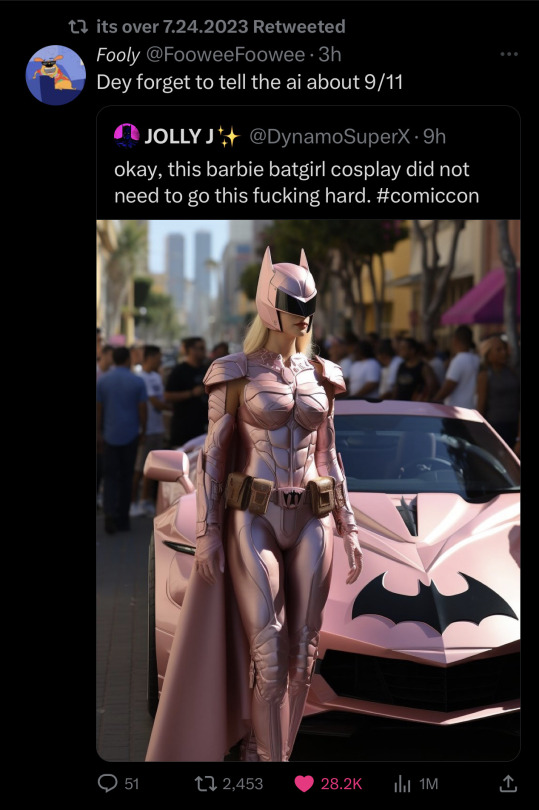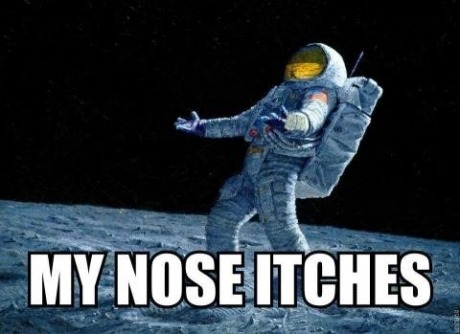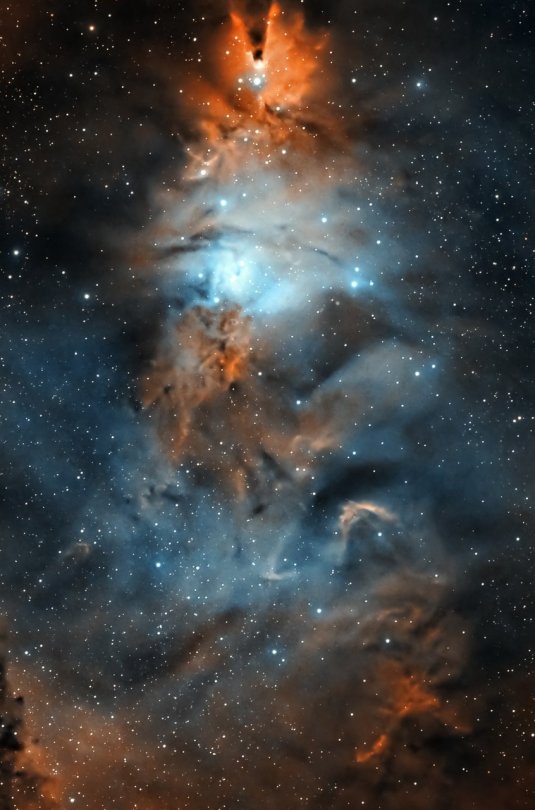space-cute
Mostly Science and PhotographyArt and Fun welcome too
261 posts
Latest Posts by space-cute

Milky Way & Airglow at Stirling Ranges, Western Australia
Nikon d810a - 50mm - ISO 2000 - f/1.8 Foreground: 15 x 20 seconds Sky: 47 x 25 seconds H-Alpha: 10 x 60 seconds iOptron SkyTracker



Shitty, shitty potato quality iphone pictures, but caught this rocket launch tonight while I was driving home. This was a Firefly Alpha rocket launched out of Vandenberg.
What absolutely kills me is that I had my full camera rig in the car. I had driven out earlier in the evening, aiming to go set up at the Pinnacles to do some astrophotography tonight. Unfortunately, the hurricane floods trashed the trail to Pinnacles and so I had to turn back.
And I am in absolute mourning for what could have been. If I'd been able to get there, I would have had the perfect shot. A clear sky and the early stages of the Milky Way, with this rocket launch arching behind the incredible rock formations at Pinnacles.
It would have been killer. And instead I ended up with these crap phone photos shot out the window of my Jeep while driving back into town. Sigh.

Comet Nishimura (c/2023 P1), 9' Sept '23. Photo by Michael Jaeger, AZM (Astronomisches Zentrum Martinsberg) Austria.
With NASA announcing their streaming service NASA+ and also announcing it’s going to be free and also ad free, I’d just like to appreciate the lengths they go to make scientific knowledge and exploration as available as they possibly can.
With NASA announcing their streaming service NASA+ and also announcing it’s going to be free and also ad free, I’d just like to appreciate the lengths they go to make scientific knowledge and exploration as available as they possibly can.

Markarian's Chain

Crux, Carina & the Magellanic Clouds at Cowcowing Lakes, Western Australia

😭😭😭😭

I saved this meme in 2013, and a full decade later I learned that its real title is “Is Anyone Out There?”
It was painted by Alan Bean, the fourth astronaut to walk on the moon.
And it still makes a darn good meme. (Even if astronauts do have bits of Velcro in their helmets for exactly this reason.)
MOXIE has ability to reliably produce oxygen at any time of day and during any season on Mars. The primary demonstration goal of MOXIE is to produce oxygen, one of the two components of rocket propellant. Returning a mission crew to Earth might require more than 30 tons of oxygen, which is too much weight to carry on board. Therefore, a scaled-up version of MOXIE would be sent to Mars ahead of a planned mission and operated continuously to produce oxygen reserves that would become rocket propellant. 🌌 🔭
Video credit: NASA/JPL-Caltech

Charon: Moon of Pluto
Credits: NASA, Johns Hopkins Univ./APL, Southwest Research Institute
What glows there? The answer depends: sea or sky? In the sea, the unusual blue glow is bioluminescence. Specifically, the glimmer arises from Noctiluca scintillans, single-celled plankton stimulated by the lapping waves.
The plankton use their glow to startle and illuminate predators. This mid-February display on an island in the Maldives was so intense that the astrophotographer described it as a turquoise wonderland.
In the sky, by contrast, are the more familiar glows of stars and nebulas. The white band rising from the artificially-illuminated green plants is created by billions of stars in the central disk of our Milky Way Galaxy.
Also visible in the sky is the star cluster Omega Centauri, toward the left, and the famous Southern Cross asterism in the center.
Red-glowing nebulas include the bright Carina Nebula, just right of center, and the expansive Gum Nebula on the upper right.
📷: Petr Horálek / Institute of Physics in Opava, Sovena Jani


Astronomers long thought that a peculiar star system observed by the European Space Agency’s Gaia satellite was a simple case of a star orbiting a black hole.
But now, two astronomers are challenging that claim, finding that the evidence suggests something far stranger: Possibly, a never-before-seen type of star made of invisible dark matter. Their research, which has yet to be peer-reviewed, was published April 18 on the preprint server arXiv.
The system itself consists of a sunlike star and, well, something else. The star weighs a little less than the sun (0.93 solar mass) and has roughly the same chemical abundance as the sun. Its mysterious companion is much more massive — around 11 solar masses. The objects orbit each other at a distance of 1.4 astronomical units, about the distance at which Mars orbits the sun, making a complete orbit every 188 days.
Continue Reading

Astronomers long thought that a peculiar star system observed by the European Space Agency’s Gaia satellite was a simple case of a star orbiting a black hole.
But now, two astronomers are challenging that claim, finding that the evidence suggests something far stranger: Possibly, a never-before-seen type of star made of invisible dark matter. Their research, which has yet to be peer-reviewed, was published April 18 on the preprint server arXiv.
The system itself consists of a sunlike star and, well, something else. The star weighs a little less than the sun (0.93 solar mass) and has roughly the same chemical abundance as the sun. Its mysterious companion is much more massive — around 11 solar masses. The objects orbit each other at a distance of 1.4 astronomical units, about the distance at which Mars orbits the sun, making a complete orbit every 188 days.
Continue Reading

Astronomers long thought that a peculiar star system observed by the European Space Agency’s Gaia satellite was a simple case of a star orbiting a black hole.
But now, two astronomers are challenging that claim, finding that the evidence suggests something far stranger: Possibly, a never-before-seen type of star made of invisible dark matter. Their research, which has yet to be peer-reviewed, was published April 18 on the preprint server arXiv.
The system itself consists of a sunlike star and, well, something else. The star weighs a little less than the sun (0.93 solar mass) and has roughly the same chemical abundance as the sun. Its mysterious companion is much more massive — around 11 solar masses. The objects orbit each other at a distance of 1.4 astronomical units, about the distance at which Mars orbits the sun, making a complete orbit every 188 days.
Continue Reading

Night of the Perseids
Credits: Petr Horálek


Sun Conjunct Jupiter April 11, 2023 The Sun brings highlights. It sheds light and illuminates.

Hubble Celebrates its 33rd Anniversary With NGC 1333 in Perseus

A sea of stars

Comet 21P in cursory close approach by europeanspaceagency

"Larger stars in cluster of the Pleiades." A beginner's star-book. 1912.
Internet Archive

Hale-Bopp: The Great Comet of 1997 : Only twenty-five years ago, Comet Hale-Bopp rounded the Sun and offered a dazzling spectacle in planet Earth’s night skies. Digitized from the original astrophoto on 35mm color slide film, this classic image of the Great Comet of 1997 was recorded a few days after its perihelion passage on April 1, 1997. Made with a camera and telephoto lens piggy-backed on a small telescope, the 10 minute long, hand-guided exposure features the memorable tails of Hale-Bopp, a whitish dust tail and blue ion tail. Here, the ion tail extends well over ten degrees across the northern sky. In all, Hale-Bopp was reported as visible to the naked eye from late May 1996 through September 1997. Also known as C/1995 O1, Hale-Bopp is recognized as one of the most compositionally pristine comets to pass through the inner Solar System. A visitor from the distant Oort cloud, the comet’s next perihelion passage should be around the year 4380 AD. Do you remember Hale-Bopp? via NASA
A Dusty Fingerprint in Space

A new image from NASA's James Webb Space Telescope reveals a remarkable cosmic sight: at least 17 concentric dust rings emanating from a pair of stars. Just 5,300 light-years from Earth, the star duo are collectively known as Wolf-Rayet 140. Each ring was created when the two stars came close together and their stellar winds (streams of gas they blow into space) collided so forcefully that some of the gas was compressed into dust. The stars' orbits bring them together about once every eight years, and forms a half-shell of dust that looks like a ring from our perspective. Like a cosmic fingerprint, the 17 rings reveal more than a century of stellar interactions—and the "fingerprint" belonging to Wolf-Rayet 140 may be equally unique. Other Wolf-Rayet stars produce dust, but no other pair are known to produce rings quite like Wolf-Rayet 140.
Learn more about Wolf-Rayet 140.
Make sure to follow us on Tumblr for your regular dose of space!

Cosmic Christmas Tree © sajjadahmed1

Dueling Bands in the Night : What are these two bands in the sky? The more commonly seen band is the one on the right and is the central band of our Milky Way galaxy. Our Sun orbits in the disk of this spiral galaxy, so that from inside, this disk appears as a band of comparable brightness all the way around the sky. The Milky Way band can also be seen all year – if out away from city lights. The less commonly seem band, on the left, is zodiacal light – sunlight reflected from dust orbiting the Sun in our Solar System. Zodiacal light is brightest near the Sun and so is best seen just before sunrise or just after sunset. On some evenings in the north, particularly during the months of March and April, this ribbon of zodiacal light can appear quite prominent after sunset. It was determined only this century that zodiacal dust was mostly expelled by comets that have passed near Jupiter. Only on certain times of the year will the two bands be seen side by side, in parts of the sky, like this. The featured image, including the Andromeda galaxy and a meteor, was captured in late January over a frozen lake in Kanding, Sichuan, China. via NASA
Hey. Why isn’t the moon landing a national holiday in the US. Isn’t that fucked up? Does anyone else think that’s absurd?
Hey. Why isn’t the moon landing a national holiday in the US. Isn’t that fucked up? Does anyone else think that’s absurd?

This is a map of the observable universe. It's interactive and cool. Go see it.